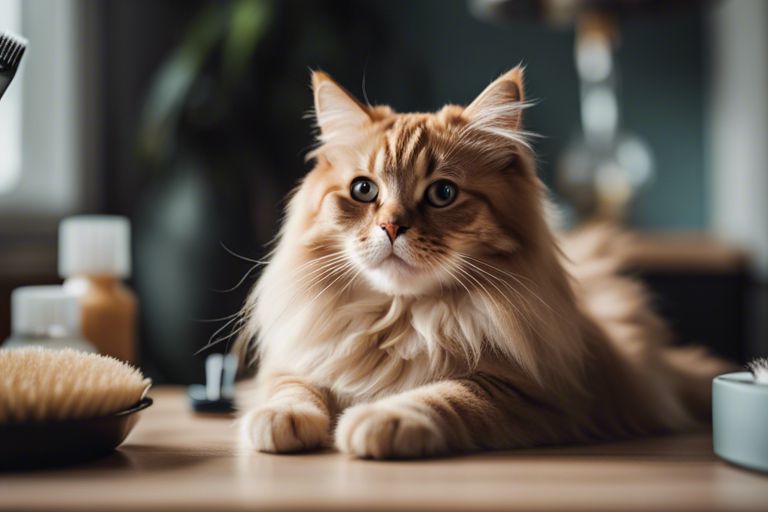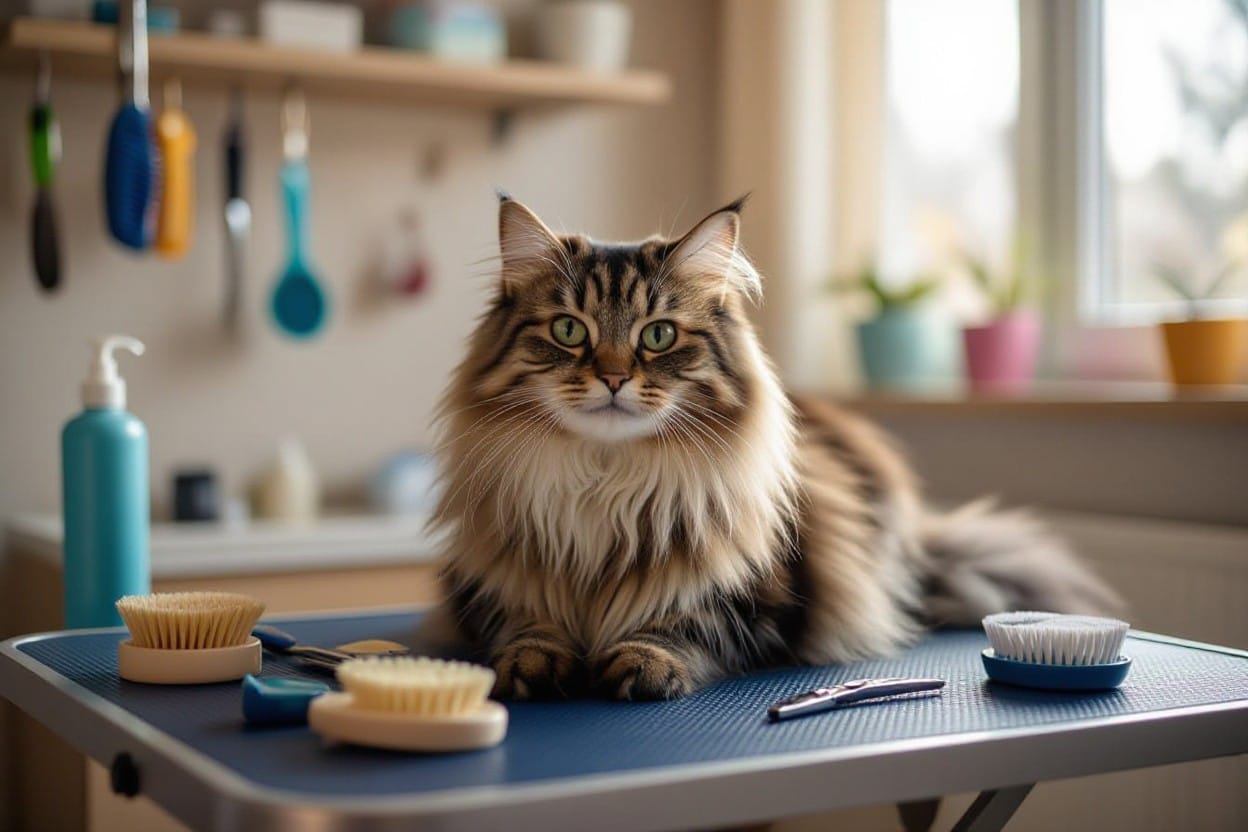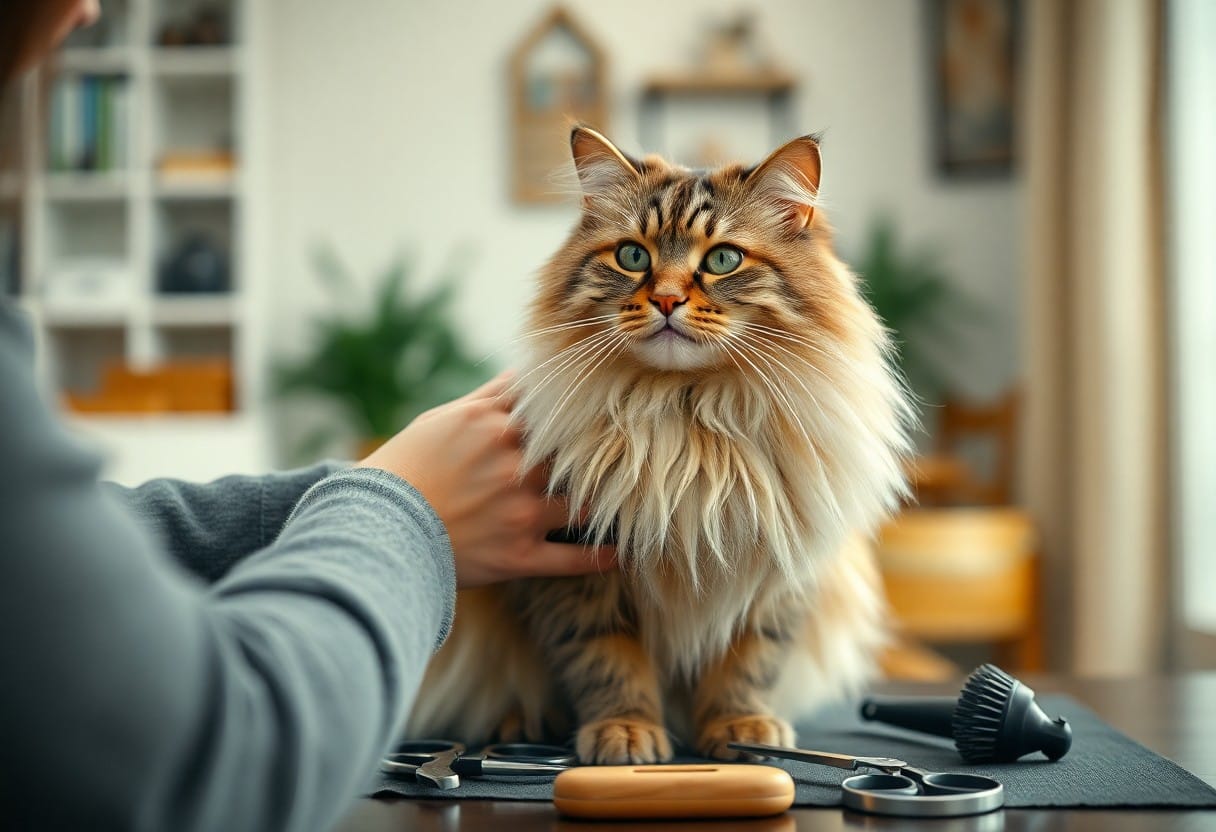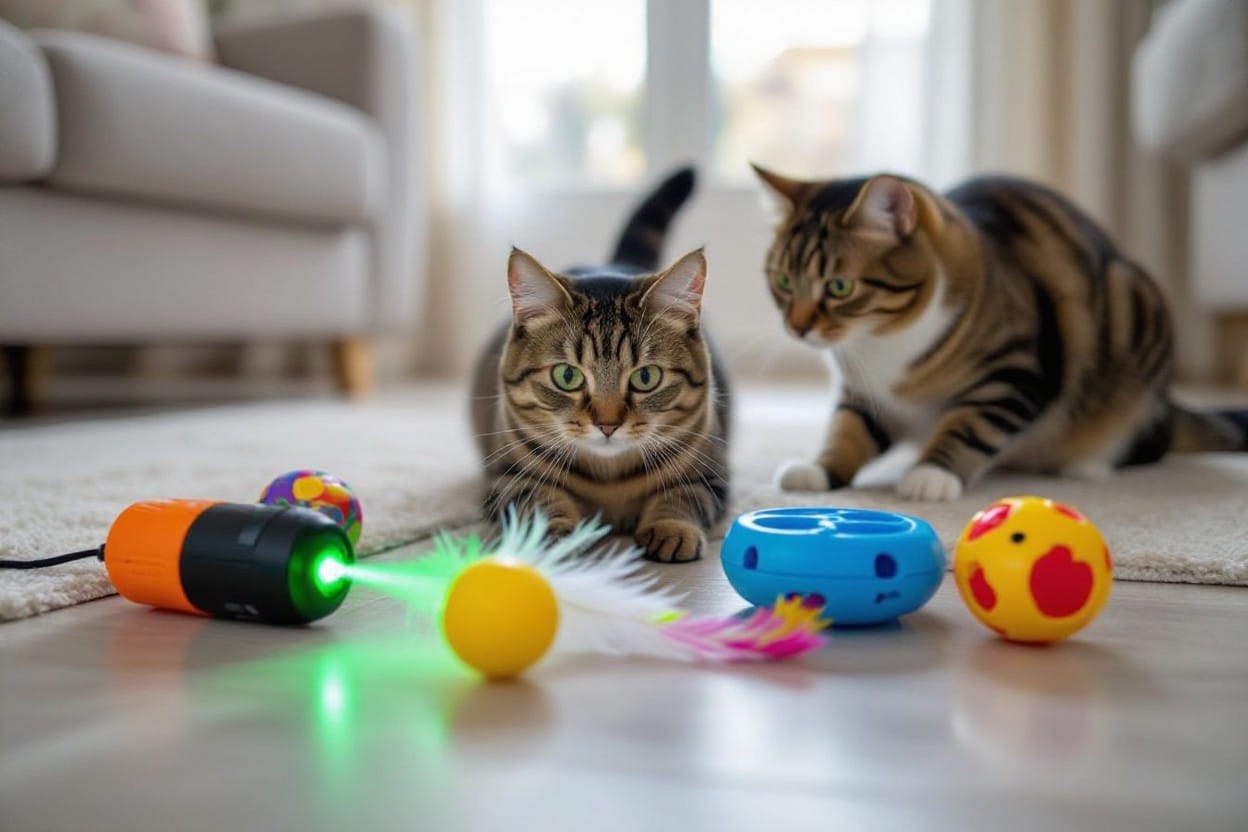Correctly grooming your cat is not only important for their overall health and well-being but also helps in preventing unwanted hairballs, matting, and shedding. Regular grooming can also help to strengthen the bond between you and your feline friend. However, grooming a cat can be a tricky task if not done correctly. In this blog post, we will discuss the benefits of cat grooming and provide you with the important tips on how to groom your cat correctly.
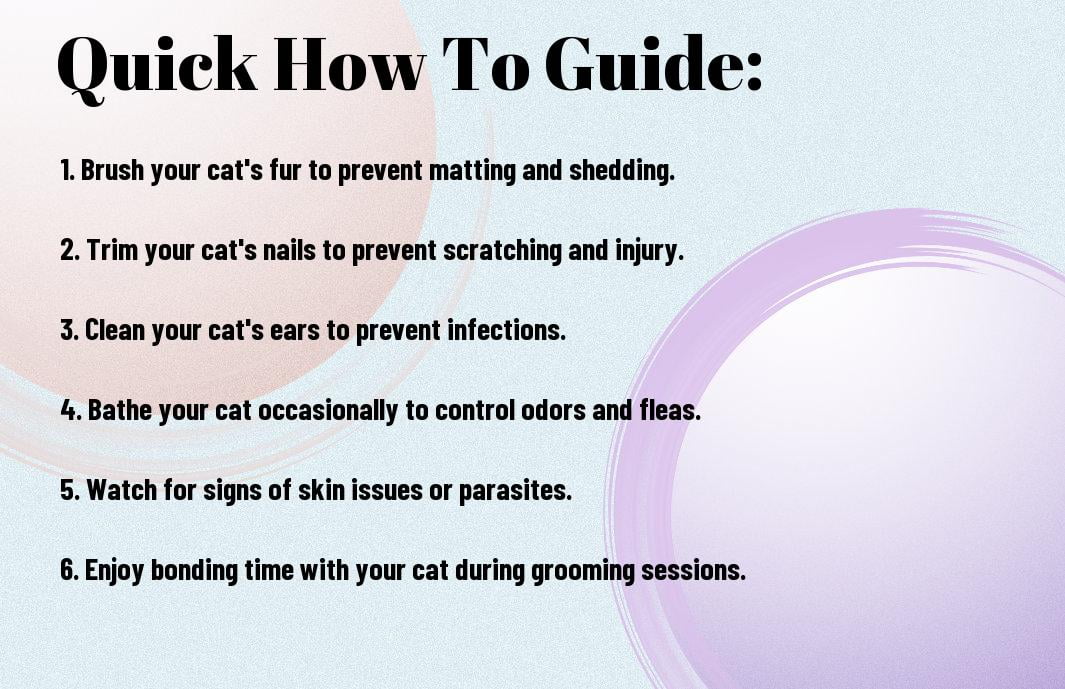
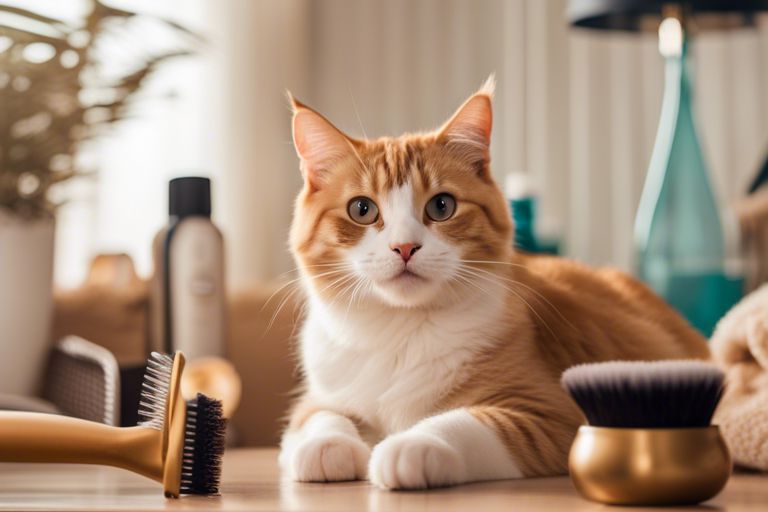
Understanding Your Cat’s Grooming Needs
There’s no one-size-fits-all approach when it comes to grooming your cat. Understanding your cat’s grooming needs is crucial to maintaining their health and well-being. Factors such as breed, age, hair length, and overall health can all play a role in determining how often your cat needs grooming.
Factors Determining Grooming Frequency
- Breed: Long-haired breeds like Persians require more grooming than short-haired breeds.
- Age: Older cats may need help with grooming due to arthritis or other health issues.
- Hair Length: Cats with longer hair are more prone to matting and will require more frequent grooming.
After considering these factors, you can create a grooming schedule that meets your cat’s specific needs.
Recognizing Signs Your Cat Needs Grooming
For cat owners, it’s crucial to recognize signs that your feline friend may need grooming. Excessive shedding, matted fur, or a dull coat are all indicators that your cat may need grooming attention. Additionally, if your cat starts grooming themselves more than usual or avoids being touched in certain areas, it could be a sign that they are in discomfort and need grooming help.
Needs can vary from cat to cat, so it’s crucial to pay attention to your feline friend’s grooming habits and behavior to determine when they need extra grooming support.
The Benefits of Regular Cat Grooming
Health and Hygiene Advantages
There’s no denying that regular grooming is necessary for the overall health and well-being of your feline companion. Assuming you brush your cat regularly, you can help prevent hairballs, matting, and excess shedding. In addition, grooming allows you to check for any abnormalities such as lumps, bumps, or parasites, ensuring early detection of potential health issues.
Behavioral and Emotional Benefits
There’s also a powerful bond that forms between you and your cat during grooming sessions. Now, grooming is not just about physical appearance; it plays a crucial role in maintaining your cat’s emotional health. Cats are natural groomers, and grooming them simulates this behavior, promoting relaxation and reducing stress. Regular grooming can also help alleviate any anxiety or behavioral issues your cat may be experiencing.
Regular grooming sessions provide an excellent opportunity for you to monitor your cat’s body language and behavior. You can observe any changes in their mood or physical condition, allowing you to address any issues promptly. By incorporating grooming into your routine, you are not only keeping your cat looking their best but also ensuring their overall well-being.
Preparing for Grooming
Creating a Calm Environment
For a successful cat grooming session, creating a calm environment is crucial. Assuming your cat is not used to grooming, it is important to introduce the process gradually. Start by petting and talking to your cat to help them relax. Choose a quiet room where your cat feels comfortable and secure. Consider using calming pheromone sprays or playing soft music to set a serene atmosphere.
Selecting the Right Tools
Selecting the right tools for grooming is important to ensure a safe and effective grooming session. Plus, having the right tools can make the process more comfortable for your cat. Choose grooming tools specifically designed for cats, such as a slicker brush, a comb, nail clippers, and cat-safe shampoo. Avoid using human grooming tools or products that may be too harsh for your cat’s sensitive skin.
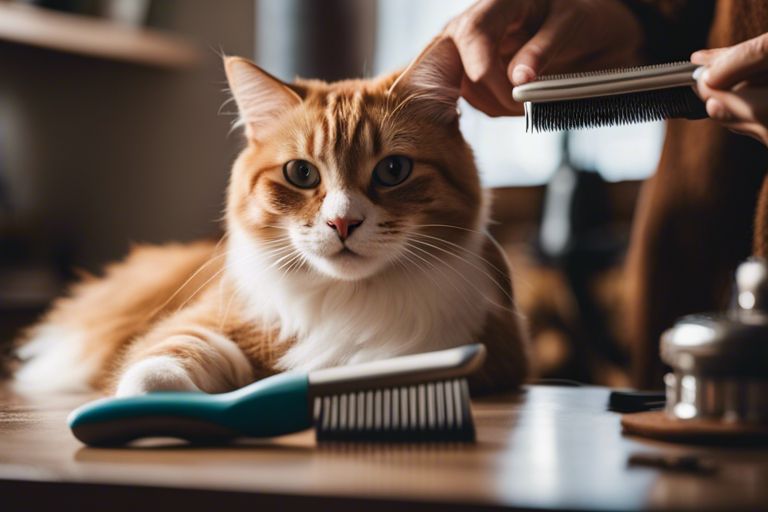
Step-by-Step Guides to Cat Grooming
All information regarding cat grooming is crucial for maintaining your feline friend’s health and well-being. Knowing how to groom your cat correctly will not only keep their coat shiny and free from mats but also prevent potential health issues such as ingrown nails or skin irritation.
| How to Brush Your Cat’s Coat | How to Safely Trim Your Cat’s Nails |
How to Brush Your Cat’s CoatWhile brushing your cat’s coat, start at the head and work your way down to the tail, using a gentle brushing motion to remove loose fur and prevent matting. Use a soft-bristled brush for short-haired cats and a comb for long-haired cats to avoid hurting their skin. |
How to Safely Trim Your Cat’s NailsGuides on safely trimming your cat’s nails are important to prevent injury and discomfort for both you and your furry companion. Use sharp, cat-specific nail clippers and only trim the tip of the nail to avoid cutting the quick. If you are uncertain, consult your veterinarian or a professional groomer for assistance. |
Understanding how to groom your cat properly will lead to a healthier and happier pet. Regular grooming sessions will also help strengthen your bond with your cat and make them feel more comfortable with being handled.
Advanced Grooming Techniques
Unlike basic grooming techniques, advanced grooming involves extra care and attention to detail. These techniques are vital for maintaining your cat’s overall health and well-being.
- How to Clean Your Cat’s Ears
Techniques
Regularly inspect your cat’s ears for dirt, wax buildup, or signs of infection.
Tools
Use a vet-approved ear cleaning solution and gentle cotton balls to clean the ear gently.
- How to Bathe Your Cat Without Stress
For
Cats that are not accustomed to baths, start by introducing them to water slowly and using cat-friendly shampoos.
How to Clean Your Cat’s Ears
Techniques for cleaning your cat’s ears involve gently inspecting both ears regularly. Look for any signs of dirt, wax buildup, or redness that could indicate an infection. It’s vital to use a vet-approved ear cleaning solution and soft cotton balls to gently clean the ears without causing any discomfort to your feline friend.
How to Bathe Your Cat Without Stress
For cats that detest water and bathing, it’s crucial to introduce them to the bathing process gradually and with patience. Use cat-friendly shampoos that are gentle on their skin and ensure that the water temperature is lukewarm. Providing treats and positive reinforcement during and after the bath can help reduce stress and make the experience more pleasant for your cat.
To maintain your cat’s hygiene effectively, incorporating these advanced grooming techniques into your routine can significantly benefit their overall health and well-being.
Dealing with Grooming Challenges
Managing a Cat with Matted Fur
Once again, grooming your cat is crucial for their health and well-being. When dealing with a cat with matted fur, patience is key. Mats can be painful for your cat and lead to skin irritation if not addressed promptly.
Now, when grooming a cat with matted fur, it’s important to use detangling sprays or conditioners to help loosen the mats. Gently work through the mats with a wide-toothed comb or a specialized mat comb, taking care not to cause your cat any discomfort. In severe cases, it might be necessary to seek professional help from a groomer or veterinarian to safely remove the mats without causing harm to your cat.
Tips for Grooming an Uncooperative Cat
You may encounter challenges when grooming a cat that is uncooperative. In these situations, it’s imperative to approach the grooming process with caution and patience to avoid stressing out your cat.
- Start by getting your cat comfortable with being handled and touched regularly, even when it’s not grooming time.
- Use treats and positive reinforcement to associate grooming with something pleasant for your cat.
You can also try breaking up the grooming session into shorter, more manageable sessions to gradually help your cat get used to the process. Knowing when to stop and not force your cat to continue if they are visibly distressed is crucial in building a positive grooming experience for your feline friend.
Maintaining Consistency and Routine
Creating a Regular Grooming Schedule
Now, one of the key aspects of successful cat grooming is consistency. Cats thrive on routine, so it’s important to establish a regular grooming schedule and stick to it. A consistent grooming routine not only keeps your cat looking and feeling great, but it also helps in detecting any potential health issues early on.
How to Keep Track of Your Grooming Sessions
Assuming responsibility for your cat’s grooming needs means staying organized. A helpful tip is to keep a grooming journal or log where you can record each grooming session. Note down what tasks were completed, any observations about your cat’s coat or skin, and how your cat reacted to the grooming session. This will not only help you keep track of when the next grooming is due but also assist in monitoring your cat’s overall health and behavior.
To ensure your cat’s grooming needs are met, it’s vital to have a well-structured grooming routine and maintain a record of each session for reference and monitoring purposes.
Final Words
Considering all points, it is clear that cat grooming is vital for maintaining the health and well-being of our feline companions. Regular grooming not only helps to prevent matting and shedding but also allows for early detection of any potential health issues. By incorporating grooming into a cat’s routine, owners can strengthen their bond with their pets and ensure they lead long and healthy lives.
Be mindful of, it is important to approach cat grooming with the right tools, techniques, and knowledge. Always be gentle and patient with your cat, and seek professional help if needed. With the proper care and attention, cat grooming can be a rewarding experience for both the pet and the owner.
FAQ
Q: Why is cat grooming important?
A: Cat grooming is important for maintaining the overall health and well-being of your feline friend. Regular grooming helps prevent mats, reduce shedding, and keep your cat’s skin and coat in good condition.
Q: How often should I groom my cat?
A: The frequency of grooming depends on your cat’s breed and coat length. Long-haired cats may require daily grooming, while short-haired cats can be groomed a few times a week. It’s best to establish a grooming routine based on your cat’s specific needs.
Q: What are the benefits of professional cat grooming?
A: Professional cat grooming services can provide a deep and thorough grooming experience that includes nail trimming, ear cleaning, and skin inspection. Groomers are trained to handle cats safely and effectively, ensuring a stress-free grooming session.
Q: How can I groom my cat at home?
A: To groom your cat at home, start by using a soft brush or comb to remove loose fur and prevent mats. Trim your cat’s nails regularly and clean their ears gently. Be patient and provide treats to make the grooming experience positive for your cat.
Q: What should I do if my cat is resistant to grooming?
A: If your cat is resistant to grooming, start slow and gradually introduce them to the grooming tools and process. Use positive reinforcement, such as treats and praise, to reward good behavior. If your cat continues to be difficult, consider seeking help from a professional groomer or veterinarian.
